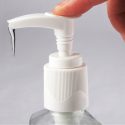Essential tips for managing high blood pressure

How to work with your doctor to manage and prevent high blood pressure.
High blood pressure (HBP) is a serious condition that affects millions of people in the U.S. each year. Untreated HBP can cause life-threatening conditions such as stroke and heart disease. Luckily, there are things you can do to manage your blood pressure and simple ways to check your numbers!
Health implications of high blood pressure
High blood pressure is a common condition. Nearly half of American adults have HBP, but many are unaware that they have the condition at all. That’s part of why HBP is called a “silent killer.” Those with HBP exhibit very very few symptoms until it’s too late [1], so many people don’t know they have it until it’s too late.
The good news is that getting the right care can help you manage HBP. Simple lifestyle changes can make a huge difference. These changes can even slow the progression of the disease and lower your risk of developing more serious conditions.
Six ways to manage your blood pressure
While you can’t change your age or genetics, you can lead a healthier lifestyle! The American Heart Association recommends the following lifestyle changes to help control HBP:
- Reducing sodium and increasing healthy foods
- Doing more physical activity
- Maintaining a healthy weight
- Managing stress
- Limiting alcohol
- Avoiding tobacco
Making healthy changes can be hard, but it’s worth the effort. UPMC Health Plan members who need support can enroll in a health coaching program.
Work with your doctor
A yearly visit to your primary care provider (PCP) can help you stay on track. Visit our provider directory to find someone that fits your needs. You can also call a UPMC Health Plan Health Care Concierge if you need help choosing a PCP. Your Health Care Concierge can schedule an appointment with the provider of your choice for you.
Ways to check your blood pressure
Your PCP will check your blood pressure when you visit the office. But what about all that time in between? If you want to monitor your blood pressure on your own, you can:
- Visit a pharmacy. Many pharmacies have blood pressure screening machines or services. You can get your reading and share the results with your provider.
- Use an at-home monitor. If you want to take your prevention methods a step further, you can buy an electronic device that will measure your blood pressure at home. Then, you’ll share the results with your provider.
It is important that you share your results with your provider. That way he or she can help create a management plan that fits your needs. Providers offer various ways to share your results such as:
- By phone.
- Through email.
- Via a patient portal.
- Over secure text message.
Consult with your provider to see what options he or she can provide.
If you have HBP, a “cure” isn’t your only hope. Management and prevention measures can go a long way, especially when it comes to the risks associated with high blood pressure!
[1] The facts about high blood pressure. The American Heart Association. Updated November 30, 2017. Accessed October 23, 2020. https://www.heart.org/en/health-topics/high-blood-pressure/the-facts-about-high-blood-pressure



